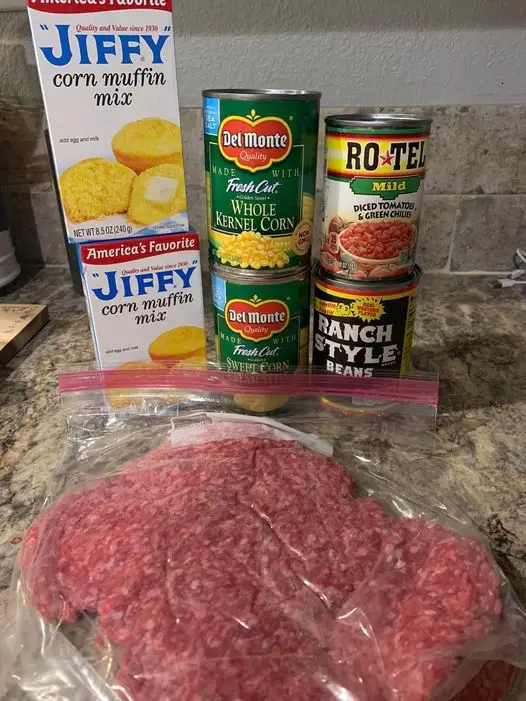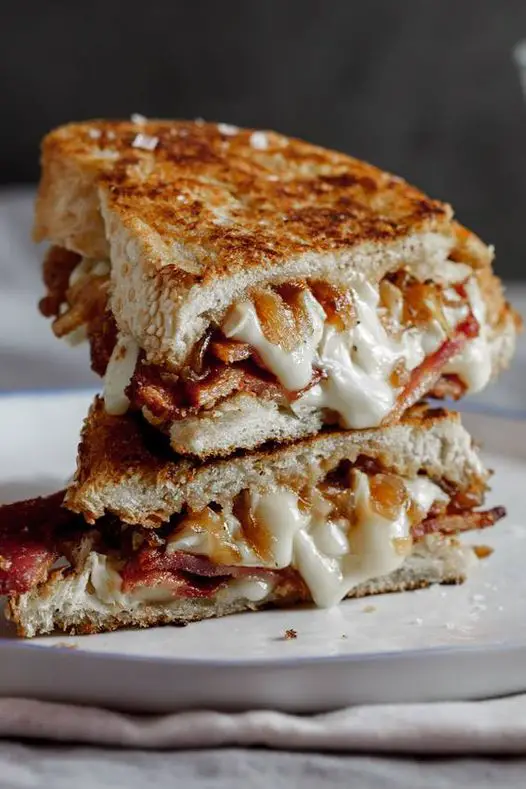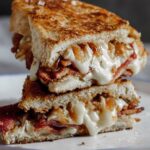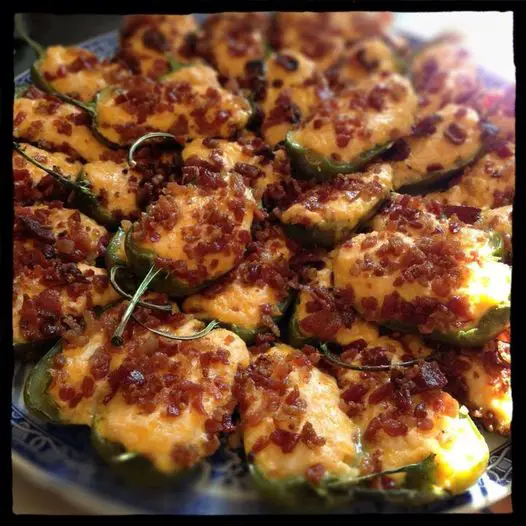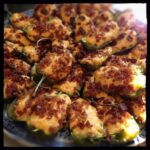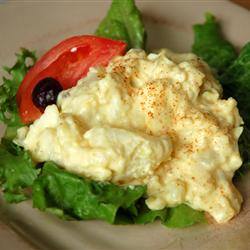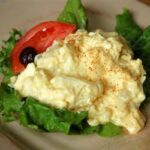The Genesis of a Homestead Staple
The story of the Cowboy Casserole begins in the heartlands, where meals weren’t just about eating but about providing sustenance and comfort. It’s a dish born from the necessity of using readily available ingredients to feed a crowd, embodying the spirit of resourcefulness and community. The casserole, with its layers of flavors and textures, quickly became a favorite, adaptable to the tastes and preferences of each family. In my home, it became a canvas for culinary creativity, a way to introduce my children to the joys of flavors and the warmth of family meals.
A Symphony of Flavors
At its core, the Cowboy Casserole is a melody of contrasting and complementary flavors. The ground beef, seasoned generously with onion and garlic powders, chili, cumin, and salt, offers a robust base, rich and meaty. The addition of ranch-style beans and Rotel introduces a Tex-Mex flair, a nod to the dish’s southwestern roots, while the whole kernel and cream-style corn add layers of sweetness and texture, balancing the heat with their natural sugars.
But the true crowning glory of this dish is the cornbread topping. Infused with the creaminess of the added cream-style corn, it bakes to a golden perfection, its crispy edges and soft center creating the perfect finish to the rich and spicy filling below. It’s this cornbread that my family looks forward to, a golden crust that’s eagerly broken to reveal the savory treasure beneath.
Customization: The Heart of Home Cooking
What makes the Cowboy Casserole truly special is its versatility. Like many, I’ve tailored the recipe to suit my family’s preferences, making it milder for the kids but adding a kick for the adults with sliced jalapeños or a dash of hot sauce. The beauty of this dish lies in its ability to be customized, making it not just a meal but a reflection of the family enjoying it. Whether topped with extra cheese, dollops of sour cream, or served alongside a crisp salad, it’s a dish that can be reinvented time and again.
More Than Just a Meal
In my home, the Cowboy Casserole is more than just a meal; it’s a tradition, a comfort, and a joy. It’s the dish we turn to when we need something familiar and heartwarming, a culinary hug that never fails to bring smiles to our faces. On nights when the world outside seems too much, it’s our reminder of the simple pleasures of life—good food, family, and the happiness found in both.
As we sit around the table, each serving of the casserole becomes a starting point for stories, laughter, and memories. It’s here, in these moments, that the true essence of the Cowboy Casserole is revealed. It’s not just in the flavors and the ingredients but in the love with which it’s made and shared.
Unraveling the Mysteries of the Cowboy Casserole
In the journey of exploring and sharing beloved family recipes, questions often arise, reflecting the curiosity and eagerness of fellow home cooks to replicate the magic in their kitchens. The Cowboy Casserole, a dish steeped in tradition and warmth, is no exception. Here, we delve into some frequently asked questions to help you bring this comforting dish to life.
Can I use a different type of meat instead of ground beef?
Absolutely. While ground beef offers a classic, rich flavor, the Cowboy Casserole is versatile enough to welcome alternatives. Ground turkey or chicken can be used for a lighter version, while plant-based grounds cater to vegetarian preferences without compromising the dish’s heartiness.
Is it possible to make the Cowboy Casserole dairy-free?
Yes, making the casserole dairy-free is quite straightforward. For the cornbread topping, seek out dairy-free cornbread mix options, and use plant-based milk and egg substitutes as needed. As for the cream-style corn, many brands offer dairy-free versions, or you can make a homemade version using dairy-free cream alternatives.
How can I adjust the spice level to suit my family’s taste?
The Cowboy Casserole’s beauty lies in its adaptability, including its heat level. For a milder dish, opt for mild Rotel or even plain diced tomatoes, and skip the jalapeños. On the other hand, if your family enjoys a fiery kick, the original Rotel and additional sliced jalapeños or a sprinkle of red pepper flakes will elevate the heat to your liking.
What are some serving suggestions to complement the Cowboy Casserole?
Given its rich and hearty nature, the casserole pairs beautifully with simpler sides. A crisp green salad, steamed green beans, or roasted vegetables offer a refreshing contrast. For an extra treat, serve alongside a dollop of sour cream or a rustic guacamole to balance the flavors.
Can the Cowboy Casserole be prepared ahead of time?
Indeed, the Cowboy Casserole lends itself well to advance preparation. Assemble the casserole up to the point of baking, cover tightly, and refrigerate. When ready to enjoy, bake as directed, adding a few extra minutes to the cooking time to account for starting from a chilled state. This make-ahead approach not only saves time but also allows the flavors to meld beautifully.
Are there any tips for storing and reheating leftovers?
Leftover Cowboy Casserole keeps well in the refrigerator for 3-4 days when stored in an airtight container. For reheating, a brief stint in the microwave will do, though warming it in the oven at 350°F until heated through can help retain more of its original texture and flavor.
How can I add more vegetables to the Cowboy Casserole?
Incorporating vegetables into the casserole is a fantastic way to boost its nutritional profile. Consider stirring in diced bell peppers, zucchini, or spinach into the beef mixture. Alternatively, a layer of sautéed kale or mushrooms can introduce new textures and flavors, enhancing the dish’s complexity and appeal.
Conclusion: A Legacy of Comfort and Warmth
The Cowboy Casserole, with its humble beginnings and rich evolution, continues to be a testament to the enduring appeal of comfort food. In each forkful, we taste the history of homestead cooking, the warmth of family gatherings, and the joy of meals shared with loved ones. It’s a dish that carries within it the stories of past generations and promises to be a part of many more to come.
As I pass this recipe down to my children, I hope they too will find joy in its creation and customization, savoring not just the meal but the memories it creates. For in the end, dishes like the Cowboy Casserole aren’t just about feeding the body but about nourishing the soul, reminding us of the power of food to bring us together and make us feel at home, no matter where we are.
Print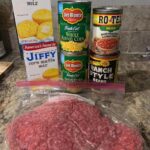
Cowboy Casserole
Description
Your family’s Cowboy Casserole sounds like a delightful and hearty meal that’s perfect for any family dinner! It’s wonderful how this recipe offers versatility, allowing for customization based on heat preference or what you have on hand. This dish combines the savory flavors of seasoned ground beef with the sweetness of corn and the richness of cornbread, creating a comforting and satisfying meal that’s sure to please everyone at the table. Here’s a more detailed look at how to make it:
Ingredients
- 1–1.5 lb ground beef
- 1 can ranch style beans
- 1 can Rotel (diced tomatoes and green chilies)
- 1 can whole kernel corn, drained
- 1 can cream style corn
- 2 boxes Jiffy cornbread mix (plus eggs and milk as required by the cornbread mix instructions)
Seasonings (adjust to taste):
- Onion powder
- Garlic powder
- Chili powder
- Cumin
- Salt
Optional Toppings:
- Sliced jalapeños (for added heat)
- Shredded cheese
- Sour cream
- Hot sauce
Instructions
Preheat and Prepare:
- Begin by preheating your oven to 400°F (200°C). This ensures your oven is ready by the time your casserole is assembled.
Brown the Beef:
- In a large skillet, brown the ground beef over medium heat, seasoning it with onion powder, garlic powder, chili powder, cumin, and salt according to your taste preferences. Once fully cooked, drain any excess fat from the pan.
Combine the Casserole Filling:
- To the skillet with the ground beef, add the ranch style beans, Rotel, and drained whole kernel corn. Stir to combine and bring the mixture to a slight boil, then reduce the heat and let it simmer while you prepare the cornbread batter.
Prepare the Cornbread:
- In a large mixing bowl, prepare the cornbread mix according to the package directions, incorporating the required eggs and milk. Once mixed, gently fold in the cream style corn into the batter, adding a moist and sweet depth to your cornbread topping.
Assemble the Casserole:
- Transfer the ground beef mixture into a 13×9 inch casserole dish, spreading it evenly. Carefully pour the cornbread batter over the beef mixture, spreading it to cover the top.
Bake:
- Place the casserole in the preheated oven and bake for 20-30 minutes, or until the cornbread topping is golden and cooked through. The high oven temperature ensures a nicely browned and crispy top.
Serve with Toppings:
- Once baked, let the casserole cool slightly before serving. Offer it with a variety of toppings like sliced jalapeños for those who like it hot, shredded cheese, sour cream for a creamy tang, and hot sauce for an extra kick.
Notes
This Cowboy Casserole is more than just a meal; it’s a celebration of family and flavor. Whether served mild for the kids, spicy for the adults, or customized with your favorite toppings, it’s a versatile dish that brings everyone together. Enjoy crafting this delicious casserole and making it a staple in your family’s dinner rotation
